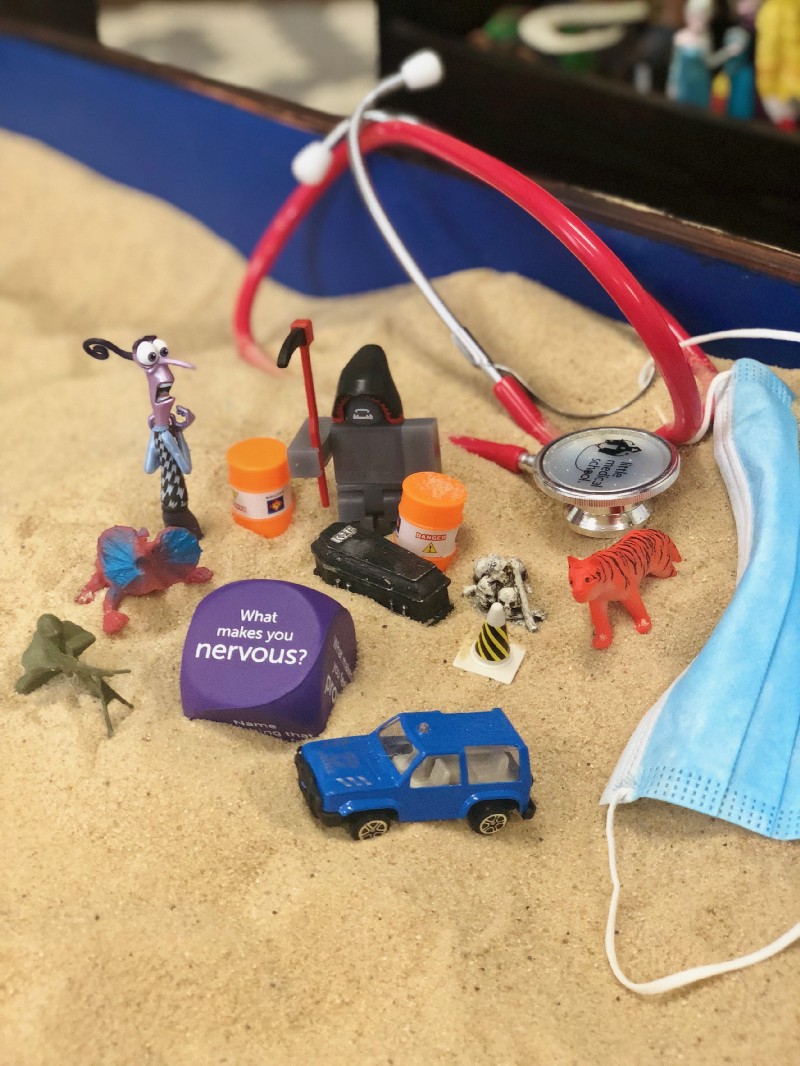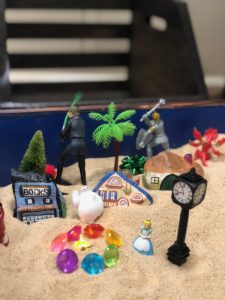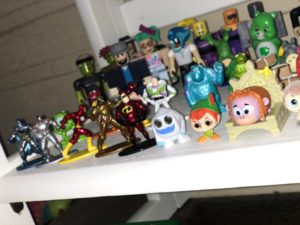TPN.Health reflects with the Feelings Doctor on how the practice of play therapy works on personal narrative construction
Story-telling is ubiquitous in that people across time and cultures have had a constant working relationship with the story-making and telling process to make sense of life experiences. The concept of story-telling as a vehicle for making sense of experiences has been expanded upon and implemented for years in the world of psychotherapy and is a commonly used mechanism in therapeutic modalities, such as Narrative Exposure Therapy (NET), bibliotherapy, play therapy, and other expressive therapies.
Daniel Taylor in his The Healing Power of Stories: Creating Yourself Through the Story of Your Life discussed the working whole of a story as it relates to the way in which humans make meaning of life experiences. Essentially, when humans make sense and meaning out of discord in personal living, they are engaging in the process of making their own stories and, thus, living their own stories. Taylor (1996) states, “Knowing and embracing healthy stories are crucial to living rightly and well. If your present life story is broken or diseased, it can be made well. Or, if necessary, it can be replaced by a story that has a plot worth living” (Taylor, 1996, p. 1).
Ultimately, when people are engaged in creating a narrative that works for them from moment-to-moment, they’re not engaged in the narratives that no longer serve them. The ways in which story-telling elements and narrative construction are incorporated into therapeutic modalities are vast, so today we will zoom into a box, that is, a box full of sand and figurines.

TPN.Health reconnected with the Feelings Doctor, Allison Palmisano, PsyD, to explore how the mechanisms of story-telling appear in the processes of play therapy. Specifically, what happens in play therapy that allows people to begin to change or make sense of the narratives that comprise their lives? Perhaps we can approach these questions by looking at the different ways that clients play.
In the sandbox portion of Dr. Allison’s playroom, clients can make a world! That’s right — they can create any world they want with any assortment of figures from Kermit the Frog to a police station-painted rock. They can use different figurines to represent different parts of the world and then name the parts as they choose. Naturally, the world they create externally in the sand will speak to their scope of inner experiences or what they want to experience.

When the Feelings Doctor asks members of a family in session to describe what goes on in the home from their individual perspectives, they can use figurines to act out scenarios. They communicate with one another through the figurines by using puppetry. In moments where clients or guardians of clients are not keen to speak, they can make their way to the dollhouse. Here, the only task is to set up their home-life inside the playhouse, with the objects and people that populate it. The choices that they make in placement, type, inclusion, and exclusion reveal what is happening in their perceived worlds. The house tells the story.
Although each part of the playroom has its own specific use tailored to each client’s needs, what happens in all areas of the room is that the feelings and perceived realities within the client’s realm of experience can move from the inside to the outside. It’s what happens in this movement that is of value here. The same thing can happen with talking, that is, a movement from inside to the outside. However, the framework of play offers an opportunity unique from talking.
Talking, for many people, becomes the primary method of negotiating with the world outside one’s own skin once a person has learned to do it. Although speaking can often be an adequate mode of expression, it has a framework with some limitations. Dr. Allison and I mused on the limitations of the speech framework, such as the practiced tendencies to filter details and react to strong feelings. Those practiced tendencies can often limit a person’s choices in relating to the world and keep people inside stories that are not serving their lives.

What happens in play is that people gain space from those practiced tendencies and have the opportunity to engage in a different method of ordering and relating to the world. Likewise, the nature of play is that there is no right or wrong, so things that can be filtered in speech now have a way into the outside world. Here the role of metaphor is principle. The characters and structures that clients choose represent and literally re-present inner experiences in a new framework.
The nonbinary nature of play not only allows for the absence of filtration but also the space for story frameworks to shift and change, free of rigid absolutes. For instance, just as easily as someone named a character or put a structure on the ground, that character can be renamed, and that structure can be removed. What’s happening here? Change, with relative ease.
What seems impossible or deeply uncomfortable in real life is now possible and encouraged in the arena of play. In this way, play practices can introduce the possibility that rigid frameworks and ways of doing things can be shifted with ease. Likewise, with the inconsequential flow of play, a person can gain a more helpful perspective by personifying a feeling that may have felt all-consuming, for example, in animating the figurine of Sadness (from Inside Out).
“Stories animate human life; that is their work. Stories work with people, for people, and always stories work on people, affecting what people are able to see as real, as possible, and as worth doing or best avoided” (Zipes, 2013, p. 1).
We’re made of stories, and so it goes that they move in us and through us. You are helping to facilitate the client’s work in and about their own stories, whether that is in reframing or simply settling into them. How are the therapeutic modalities you practice working on clients’ narratives? We’d love to hear your experiences.
Keep up with the progress of TPN.Health! Subscribe to our mailing list.
Sign up today to start connecting with clinicians in Louisiana.
References:
Zipes, J. D. (2013). The irresistible fairy tale: the cultural and social history of a genre. Princeton: Princeton University Press.
Taylor, D. (1997). The healing power of stories: creating yourself through the stories of your life. Alexandria, N.S.W.: Millennium Books.
